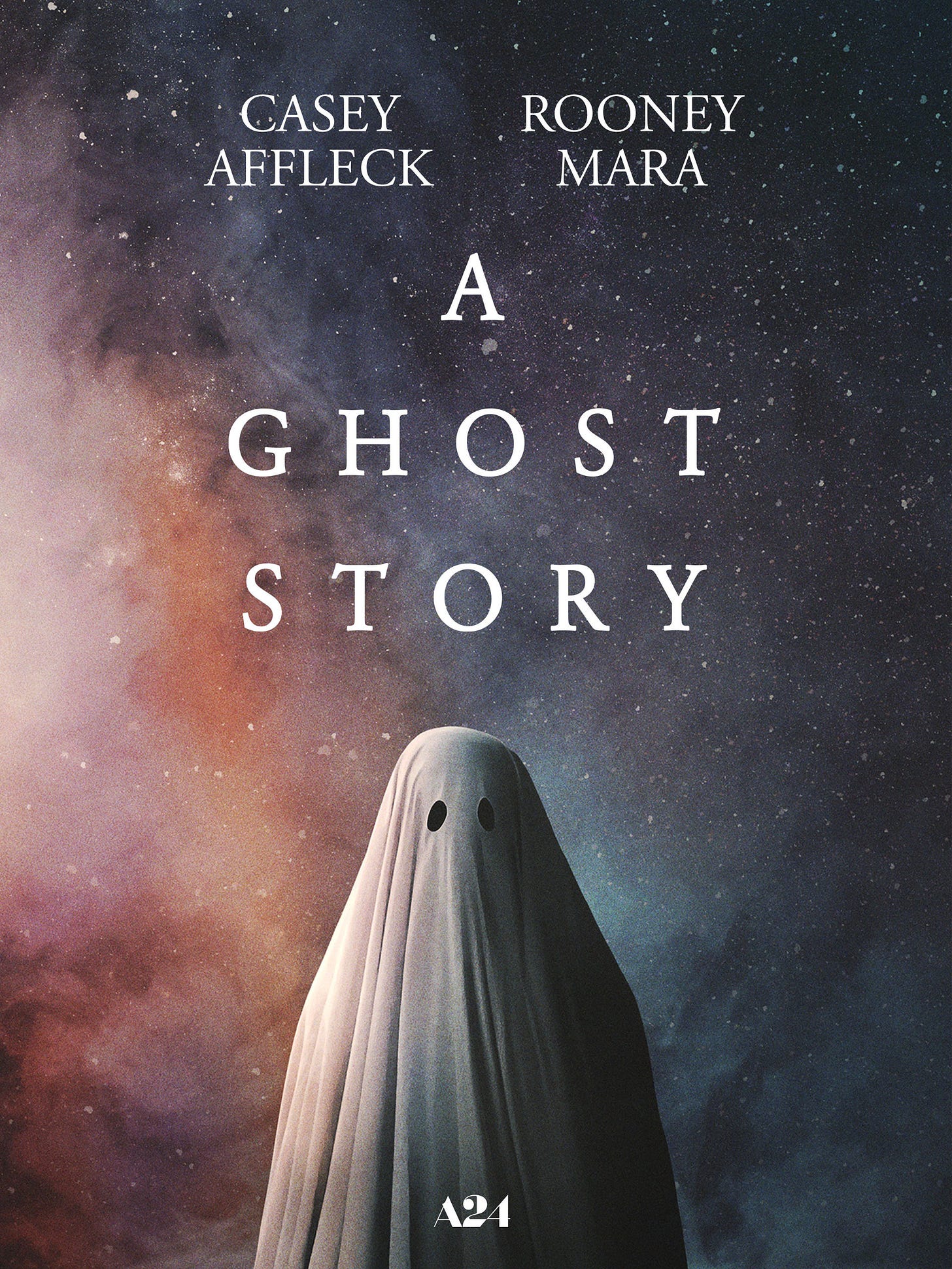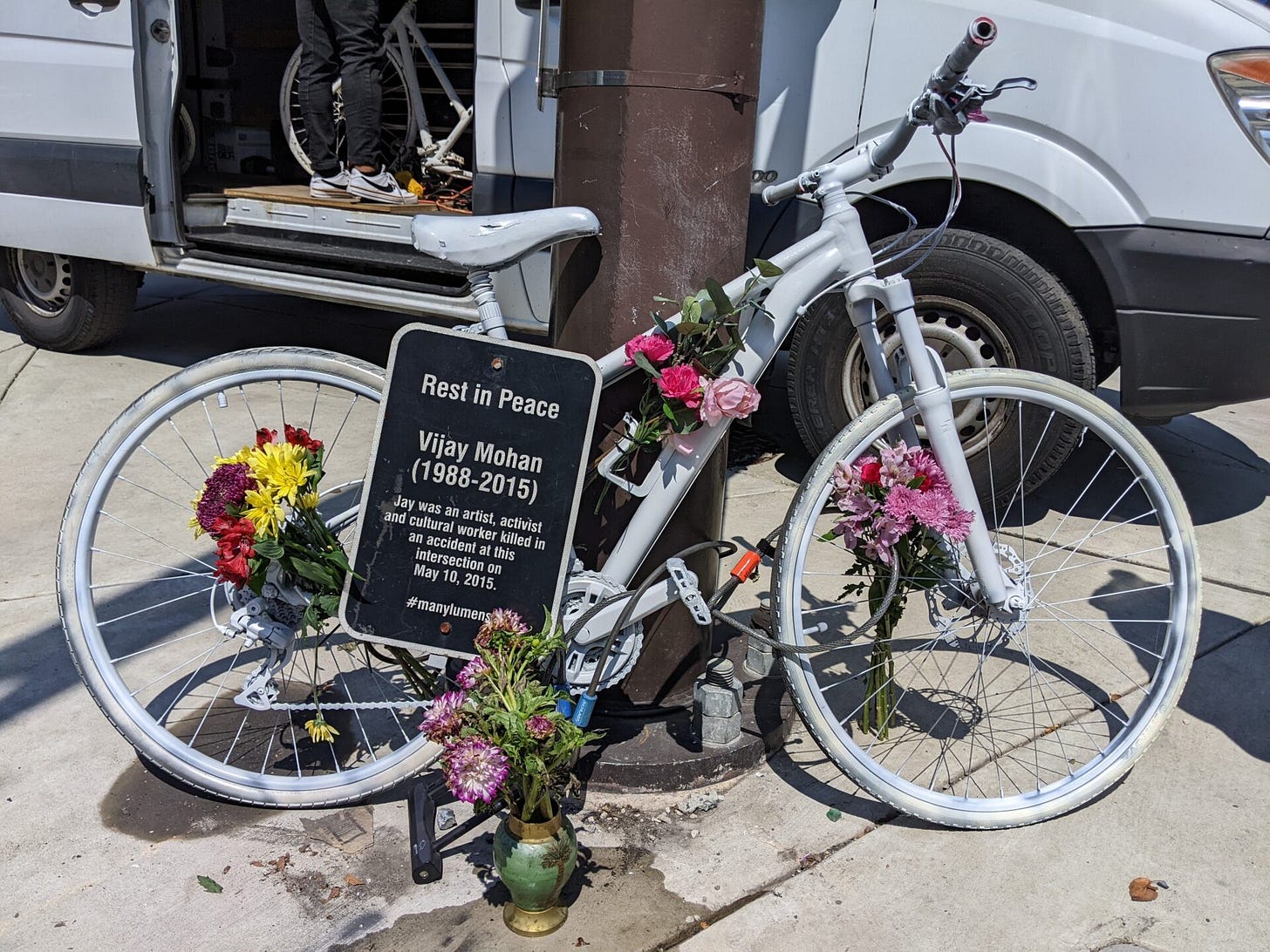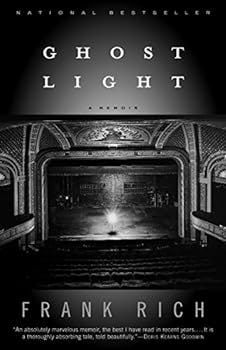
Happy Halloween to all who celebrate, which usually excludes me. This year, however, I bring you some Halloween content that involves neither costumes nor candy and definitely skews mature: linguistic compounds with ghost.
Ghost bike
Also called ghostcycle or whitecycle. “A roadside memorial, placed where a cyclist has been killed or severely injured, usually by the driver of a motor vehicle. … Ghost bikes are usually junk bicycles painted white, sometimes with a placard attached, and locked to a suitable object close to the scene of the accident.” (Wikipedia) White-painted bikes originated in 1960s Amsterdam as an anarchist project: the white bikes were free for the taking. In the U.S., the first ghost-bike memorial appeared in St. Louis in 2003; there are now more than 200 ghost-bike installations around the world. Read more at GhostBikes.org.

Ghost gun
From the website of Brady, the nonprofit gun-control organization: “Ghost guns are unserialized and untraceable firearms that can be bought online and assembled at home. They are often sold through ‘ghost gun kits,’ which include all of the parts and often the equipment necessary to build these weapons at home. These kits are widely available and can be purchased by anyone, including prohibited purchasers, domestic abusers, and gun traffickers — without a background check.” I wrote about ghost guns in April 2021.
Ghost light
An electric light left burning over a theater stage when the theater is unoccupied. Also known as an equity light (from Actors Equity Association, the theatrical trade union). The practical reason for the custom is safety; the poetic reason is sometimes summarized as “to keep ghosts at bay.” Former New York Times theater critic Frank Rich chose Ghost Light as the title of his 2001 memoir; a reviewer called it an apt choice: “For the lonely, sleepless boy, terrified of the dark, theater was a reassuring night light.”

Ghost kitchen
A ghost kitchen, Mike Pope wrote in February 2021, is “a commercial kitchen that’s set up in an industrial space somewhere. There’s no storefront, no dining area, no waitstaff, and of course no customers.” Ghost kitchens are also known as dark kitchens, virtual brands, and delivery-only concepts. They proliferated after Covid-related shutdowns in March 2020; in November 2020, Eater called them “the wave of the future” for food service.
Ghost pepper
An hybrid chili pepper cultivated in Northeast India, where it is called bhut jolokia. According to a Wikipedia entry, “In 2007, Guinness World Records certified that the ghost pepper was the world's hottest chili pepper, 170 times hotter than Tabasco sauce.” That record has fallen twice: first to the Carolina Reaper and recently to Pepper X1; both were the creations of a South Carolina grower named Ed Currie2. According to an October 18, 2023, Food and Wine article, Pepper X has been years in development: Currie “wanted this pepper — a crossbreed between a Carolina Reaper and one he only described as ‘brutally hot’ — ready in case another pepper breeder developed something hot enough to dethrone the Reaper. That never happened, so he decided that he'd have to be the man who broke his own record.”
Ghost plane
A term used in aviation to describe a plane already in the air that “suffers some type of accident that has incapacitated the crew and passengers but continues to fly until it runs out of fuel and crashes.” (Wikipedia) Also called a ghost flight (a term that may also refer to “an empty or near-empty flight carried out to preserve a landing slot”).
Ghost river
A waterway that has been paved over but still flows beneath the surface in concrete tunnels. A public-art installation and walking-tour program in Baltimore seeks to bring awareness to the city’s ghost rivers. Ghost rivers are sometimes called ghost streams; Brynn O’Donnell, a freshwater ecosystem scientist, wrote about them for Popular Science in 2019. “Across the country, buried beneath the pavement you walk on, an invisible network of waterways flows through the darkness,” O’Donnell wrote. “These are ghost streams, and they’re haunting us.”

Ghost ship
A ship with no living crew aboard, such as the legendary Flying Dutchman. “Ghost Ship” was also the name of an Oakland, California, warehouse that housed an artists’ collective; the building was destroyed in a December 2016 fire, killing 36 people. It was the deadliest fire in Oakland history.
Ghost sign
An old hand-painted advertising sign that has endured (or been preserved). Also called a brickad (because many such signs were painted directly on brick walls) or a fading ad. Individuals and groups around the world, and especially in North America and Britain, photograph the signs and organize walking tours to view them. Here’s a website devoted to London (UK) ghost signs; here’s one for Bay Area ghost signs.

Ghost story
“A story about ghosts or the supernatural, intended to be frightening or thrilling” (OED) The term’s earliest print appearance was in John Oldmixon’s 1730 History of England: House of Stuart.
Ghost town
“A town partially or completely devoid of its inhabitants; (in early use) esp. a former boom town that has been deserted as a result of the closing down of the industry or trade that sustained it.” (OED) Also used metaphorically to describe any deserted place. The term’s earliest appearance, according to the OED, was in an 1894 story in the Philadelphia Times: “The dismantled place is now known as ‘Spookville’, and as the train whirls by the passenger who is looking for California curios is shown a tent on a hill—all that remains of the ghost town.”
Ghost train
One sense of ghost train, used in both the U.S. and the U.K., is “a small train at an amusement park that travels through a dark tunnel in which sounds, lights, and mechanized objects are used to scare the people in the train.” (Collins Dictionary) British English has an additional sense: “a train run during the night to keep railways clear of snow and ice.”
Ghostwriter
A person who writes an article, book, or speech for another person, under whose name it is published. The OED says it’s “originally U.S.,” first appearing in print in 1908. “To ghost write” was backformed from the noun in the 1920s.
Ghost word
Coined by the British philologist Walter William Skeat to describe a word that exists only in dictionaries or “an apparent word or false form in a manuscript due to a blunder” and has “no meaning whatever.” Lexicographer and Wordnik founder Erin McKean wrote for Planet Word Museum about ghost words:
Probably the most famous [ghost word] is dord, which was entered into the second edition of Merriam-Webster’s New International Dictionary in 1934, defined as “density.” No such word as dord actually existed — it was an error for D or d — that is, that the letter D, either as a capital or lower-case, could be used as an abbreviation for “density.” (The error was discovered in 1939 — remarkably quickly for that era of lexicography — and was corrected in most editions shortly thereafter.)
If you’ve read all this and still ain’t afraid of no ghost, float on over to Dave Wilton’s
to read about “give up the ghost” and the verb “to ghost”—”to cut off contact with a person, to suddenly stop returning their calls and texts.” Wilton says the latter usage was “in place by 2010.”What x-plains the obsession with “X” names? I took a stab at answering that question back in 2014.






Spectrally good.
I’ve long referred to vehicles driven in fog or at twilight with no headlights on as ghost ships. The owners are sure they can see the road perfectly well but to others they appear out of nowhere.
Spirit-ually entertaining column this All Hallow’s Eve